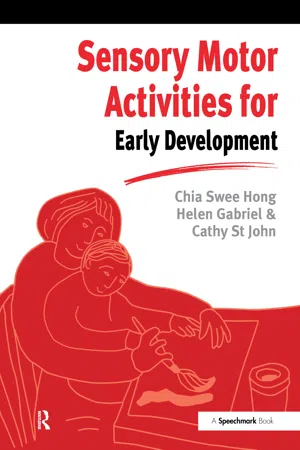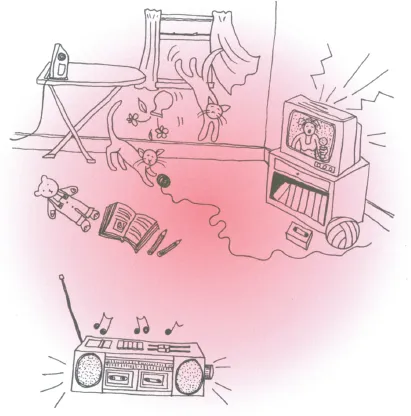
This is a test
- 108 pages
- English
- ePUB (mobile friendly)
- Available on iOS & Android
eBook - ePub
Sensory Motor Activities for Early Development
Book details
Book preview
Table of contents
Citations
About This Book
This is a successful manual of tried and tested activities to develop gross and fine motor skills in children. It contains: Numerous creative activities to stimulate sensory and body awareness, encourage basic movement, promote hand skills and enhance spatial/perceptual skills; Information on working in small groups; Handouts that can be photocopied to give to parents or other carers for home practice.
Frequently asked questions
At the moment all of our mobile-responsive ePub books are available to download via the app. Most of our PDFs are also available to download and we're working on making the final remaining ones downloadable now. Learn more here.
Both plans give you full access to the library and all of Perlego’s features. The only differences are the price and subscription period: With the annual plan you’ll save around 30% compared to 12 months on the monthly plan.
We are an online textbook subscription service, where you can get access to an entire online library for less than the price of a single book per month. With over 1 million books across 1000+ topics, we’ve got you covered! Learn more here.
Look out for the read-aloud symbol on your next book to see if you can listen to it. The read-aloud tool reads text aloud for you, highlighting the text as it is being read. You can pause it, speed it up and slow it down. Learn more here.
Yes, you can access Sensory Motor Activities for Early Development by Chia Swee Hong, Helen Gabriel in PDF and/or ePUB format, as well as other popular books in Education & Education General. We have over one million books available in our catalogue for you to explore.
Information
1
Getting started
You and your family are the child’s best playthings. Your child will respond to care, attention and love and, with your help, your child can become more independent. We have given some general guidelines to help you to make your interaction with your child a positive one.
General Hints
•Fill your child’s day — find lots of things for your child to look at, think about and do and make time for rest.
•Talk about everything you do.
•Share the responsibility for your child’s care with others.
•Look for ways to turn activities into games. Find ways of enjoying each other’s company and have fun together. If it is fun and interesting for your child, you are less likely to become tired and harassed.
•Find something that your child is good with and can be positive about. Use things which can be used to motivate the child.
•Never leave your child unsupervised. Make sure you use toys which conform to your country’s safety standards.
•Make a collection of odds and ends such as boxes, bottle tops, scraps of materials, wrapping papers and dressing up clothes.
•Reduce the help you give as and when appropriate in activity sessions or in day-to-day activities.
•Ensure that everyone who works with and has contact with the child uses a consistent approach — provided it works!
•Join organizations such as local libraries or playgroups for children with special needs that can help and inspire you.

Before an activity session
•Create a happy and relaxed atmosphere, using appropriate rooms and minimizing distractions — movement, background music, television or toys cluttering the room.
•Be practical, be realistic. Choose skills and activities that will help the child to become more independent and able to do more for himself and others. If possible, plan activities to progress naturally from one skill to the next.
•Make sure you and your child are relaxed and that you have the time to work with him.
•Make sure you have all the equipment that is needed in the session.
During an activity session
•Try to be at the same level as your child, whether sitting on the floor or at the table. Ensure that your child feels happy and secure.
•If your child is unable to move, make sure he is appropriately placed — keep his head, trunk and limbs in a symmetrical position. Change this position frequently, as remaining static can lead to stiffness and deformities.
•Set short but regular sessions for one-to-one work. Introduce a new activity slowly and carefully. Give plent...
Table of contents
- Cover
- Half Title
- Dedication Page
- Title Page
- Copyright Page
- Contents
- Acknowledgements
- Introduction
- 1 Getting started
- 2 Activities to stimulate sensory and body awareness
- 3 Activities for encouraging basic movement
- 4 Activities to promote hand skills
- 5 Activities to enhance spatial and early perceptual skills
- 6 Working in small groups
- 7 More creative ideas
- Bibliography
- Useful organizations